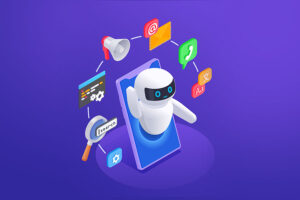A Comprehensive Guide to IT as a Service
Businesses are continually seeking ways to streamline operations, reduce costs, and enhance agility. One approach gaining significant traction is IT as a Service (ITaaS). This model revolutionizes the traditional IT infrastructure, offering a plethora of benefits ranging from cost efficiency to scalability and agility.
But what exactly is ITaaS, and how does it differ from conventional IT setups?
What is ITaaS?
ITaaS, short for IT as a Service, represents a huge shift in the delivery of IT resources. Instead of maintaining dedicated physical infrastructure, businesses leverage cloud-based solutions to access computing power, storage, networking, and software applications on-demand, paying only for the resources they consume.
Key Components of ITaaS
At its core, ITaaS comprises three fundamental components.
- Infrastructure as a Service (IaaS) – Provides virtualized computing resources, including servers, storage, and networking, delivered over the internet.
- Platform as a Service (PaaS) – Offers a development environment with tools and frameworks for building, testing, and deploying applications without the complexity of managing underlying infrastructure.
- Software as a Service (SaaS) – Delivers software applications on a subscription basis, accessible via the internet, eliminating the need for installation and maintenance.
Beyond the 3 fundamental components, ITaaS offers a broader spectrum of services and capabilities
1. Network as a Service (NaaS)
NaaS provides on-demand networking capabilities, including virtual private networks (VPNs), bandwidth management, and security services, delivered over the internet. It offers flexibility and scalability in configuring and managing network infrastructure without the need for extensive hardware investments.
2. Database as a Service (DBaaS)
DBaaS offers managed database services, allowing organizations to provision, operate, and scale databases without the overhead of infrastructure management. It provides features such as automated backups, replication, and scaling, enabling efficient data storage and retrieval for applications and analytics.
3. Security as a Service (SECaaS)
SECaaS delivers a comprehensive suite of security solutions, including threat detection, vulnerability management, and compliance monitoring, as a subscription-based service. It helps businesses enhance their cybersecurity posture, mitigate risks, and ensure regulatory compliance without the need for dedicated security infrastructure and expertise.
4. Desktop as a Service (DaaS)
DaaS provides virtual desktop environments accessible from any device, enabling remote access to applications and data. It centralizes desktop management, simplifies software deployment and updates, and enhances user productivity while ensuring data security and compliance.
5. Backup and Recovery as a Service (BRaaS)
BRaaS offers automated backup, replication, and recovery solutions for critical data and applications, eliminating the need for manual intervention and ensuring business continuity in the event of data loss or system failures. It provides flexible storage options, granular recovery capabilities, and robust data encryption to safeguard against potential threats and disasters.
6. Monitoring and Management as a Service (MMaaS)
MMaaS delivers centralized monitoring, management, and optimization tools for IT infrastructure and applications, enabling proactive performance monitoring, resource allocation, and troubleshooting. It offers real-time insights, predictive analytics, and automation capabilities to streamline operations, reduce downtime, and improve overall efficiency.
7. Identity and Access Management as a Service (IAMaaS)
IAMaaS provides centralized identity and access management solutions, including user authentication, authorization, and multi-factor authentication, delivered as a service. It helps businesses enhance security, enforce access policies, and streamline user provisioning and deprovisioning across diverse applications and platforms.
8. Collaboration as a Service (CaaS)
CaaS facilitates seamless communication and collaboration among distributed teams through integrated messaging, video conferencing, and document sharing tools. It fosters productivity, innovation, and teamwork while ensuring data privacy and compliance with regulatory requirements.
9. Container as a Service (CaaS)
CaaS offers managed container orchestration platforms, such as Kubernetes, for deploying and managing containerized applications at scale. It abstracts the complexity of container management, automates resource provisioning, and accelerates application development and deployment workflows.
10. Artificial Intelligence as a Service (AIaaS)
AIaaS provides access to artificial intelligence and machine learning capabilities, including pre-trained models, data analytics, and natural language processing services, via cloud-based APIs. It empowers businesses to harness the power of AI without the need for specialized infrastructure or expertise, driving innovation and unlocking new insights from data.
What are the benefits of ITaaS?
While the cost efficiency, scalability, agility, and simplified management aspects of ITaaS are pivotal, there are further benefits that organizations can reap from adopting this innovative model.
1. Resource Optimization
ITaaS facilitates efficient resource allocation and utilization, ensuring that businesses have the right amount of computing power, storage, and networking resources to meet their needs. By optimizing resource usage, organizations can minimize waste, improve cost-effectiveness, and maximize return on investment (ROI).
2. Global Accessibility
With ITaaS, employees can access IT resources and applications from anywhere in the world with an internet connection. This global accessibility promotes collaboration, flexibility, and productivity, empowering remote and distributed teams to work seamlessly across geographic boundaries and time zones.
3. Rapid Innovation
By using cloud-based platforms and services, ITaaS accelerates innovation cycles, enabling businesses to experiment, iterate, and innovate at a faster pace. Organizations can quickly prototype new ideas, test hypotheses, and bring innovative products and services to market, gaining a competitive edge in dynamic industries.
4. Enhanced Customer Experience
ITaaS enables businesses to deliver seamless and personalized customer experiences by leveraging data analytics, AI, and automation. By analyzing customer behavior, preferences, and feedback in real-time, organizations can tailor products, services, and interactions to meet individual needs and expectations, driving customer satisfaction and loyalty.
5. Disaster Resilience
ITaaS enhances resilience and disaster recovery capabilities by leveraging redundant infrastructure, automated backups, and failover mechanisms. In the event of hardware failures, data breaches, or natural disasters, organizations can quickly recover critical systems and data, minimizing downtime and mitigating financial and reputational risks.
6. Competitive Advantage
By embracing ITaaS, businesses can gain a competitive advantage in the marketplace by adapting to changing market conditions, customer demands, and technological advancements more effectively than their peers. ITaaS empowers organizations to innovate, differentiate, and outmaneuver competitors, positioning them for long-term success and growth.
7. Compliance and Governance
ITaaS helps organizations maintain regulatory compliance and governance standards by providing built-in security controls, audit trails, and compliance frameworks. Whether it’s HIPAA for healthcare, GDPR for data privacy, or PCI DSS for payment card security, ITaaS platforms offer tools and features to ensure adherence to industry-specific regulations and standards.
8. Environmental Sustainability
By transitioning to ITaaS, businesses can reduce their environmental footprint and contribute to sustainability efforts by optimizing resource usage, minimizing energy consumption, and reducing e-waste. Cloud-based infrastructure and virtualized services require fewer physical resources and generate less carbon emissions compared to traditional IT setups, making ITaaS a greener alternative.
How is ITaaS different from Traditional IT?
Improved Business Continuity and Disaster Recovery
ITaaS enhances business continuity and disaster recovery capabilities by leveraging redundant infrastructure, automated backups, and geo-replication. Unlike traditional IT setups that rely on manual backups and tape-based solutions, ITaaS platforms offer resilient architectures and built-in redundancy, ensuring data availability and service continuity in the face of unforeseen disruptions or disasters.
Enhanced Collaboration and Innovation
ITaaS makes way for collaboration and innovation by providing shared access to centralized IT resources, tools, and platforms. Through collaborative development environments, version control systems, and project management tools, ITaaS facilitates teamwork, knowledge sharing, and innovation across distributed teams, driving creativity, productivity, and business growth.
Scalable Security and Compliance
ITaaS enhances security and compliance posture by offering scalable security solutions and built-in compliance frameworks. From identity and access management (IAM) to threat detection and encryption, ITaaS platforms provide robust security controls and monitoring capabilities that help organizations mitigate risks, protect sensitive data, and ensure regulatory compliance in a dynamic threat landscape.
Focus on Core Competencies
By outsourcing non-core IT functions to ITaaS providers, organizations can focus their resources and expertise on strategic initiatives and core business activities. ITaaS allows businesses to offload routine IT tasks such as maintenance, updates, and troubleshooting to external experts, enabling internal teams to concentrate on innovation, differentiation, and value creation.
Rapid Deployment and Time-to-Market
ITaaS enables rapid deployment of IT resources and services, reducing the time-to-market for new initiatives and projects. Unlike traditional IT setups that require procurement, provisioning, and configuration of physical hardware, ITaaS allows organizations to spin up virtual environments and launch applications with minimal lead time, accelerating innovation and competitiveness.
Dynamic Workload Management
ITaaS empowers organizations to dynamically manage workloads and allocate resources based on fluctuating demand and priorities. Through automation and orchestration tools, businesses can optimize resource utilization, prioritize critical workloads, and scale resources up or down in real-time to meet changing business requirements, ensuring agility and responsiveness in dynamic environments.
Access to Cutting-Edge Technologies
ITaaS provides access to cutting-edge technologies and services that may be prohibitively expensive or complex to implement with traditional IT infrastructure. From artificial intelligence (AI) and machine learning (ML) to Internet of Things (IoT) and blockchain, ITaaS platforms offer a wide range of innovative solutions and capabilities that enable organizations to drive digital transformation, unlock new insights, and create differentiated customer experiences.
Final Thoughts
ITaaS offers unparalleled flexibility, allowing your organization to adapt quickly to changing market conditions and technological advancements.
Unlike fixed infrastructure, ITaaS scales seamlessly to meet evolving demands, ensuring optimal resource utilization and performance.
Moreover, with pay-as-you-go pricing models, businesses can align IT expenditures with actual usage, avoiding upfront capital investments and reducing total cost of ownership.
Try PeritusHub’s vast range of ITaaS solutions! Book a call now and start reaping the benefits!












